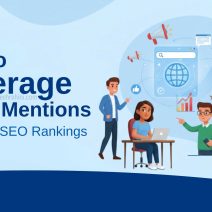
How to Improve Business Loan Eligibility ? : Comprehensive Guide 2025
Improve Business Loan Eligibility : In today’s dynamic business environment, access to timely funding can be the difference between success and stagnation. Whether you’re a startup entrepreneur, a seasoned business owner, or an aspiring MSME, securing a business loan in 2025 requires more than just filling out an application.
Table of Contents
With banks, NBFCs, and fintech lenders tightening their credit norms, understanding how to improve business loan eligibility is crucial to ensure your venture gets the financial support it needs. This comprehensive guide explores the key factors affecting business loan eligibility, the common mistakes to avoid, and practical, proven strategies to significantly enhance your approval chances.
🔵 Why Business Loan Eligibility Matters

Business loan eligibility refers to the lender’s assessment of whether your business qualifies for credit based on parameters such as income, credit history, repayment capacity, and business stability. Improving your eligibility means increasing the likelihood of loan approval and securing favorable terms such as lower interest rates, higher loan amounts, and longer repayment periods.
Also Read: Get Business Loan up to 30 Lakhs – Comprehensive Guide
In 2025, lenders evaluate loan applications through a combination of traditional and technology-driven methods, including AI credit scoring, GST-linked income verification, and alternative data models. Hence, a proactive approach is necessary to position your business as a low-risk, high-potential borrower.
🔵 Key Factors That Affect Business Loan Eligibility
Before discussing how to improve eligibility, it’s vital to understand what lenders typically look for:
1. Business Vintage and Stability
Lenders prefer businesses with a consistent track record of operations for at least 1-3 years. The longer your business has been running profitably, the more favorably it is viewed.
2. Credit Score (CIBIL or Experian)
A credit score of 700+ (for business or promoter) is often considered ideal. It reflects your repayment behavior, existing liabilities, and financial discipline.
3. Annual Turnover and Profitability
Higher turnover and steady profits signal a healthy financial condition and repayment capacity. Lenders often require audited financials or GST returns for verification.
4. Debt-to-Income Ratio
A lower ratio indicates that your business is not overleveraged and has enough cash flow to service new loans.
5. Business Type and Industry
Some sectors (e.g., hospitality, real estate) may be seen as higher risk. Businesses in stable or growth industries are more likely to receive favorable loan terms.
6. Collateral (for Secured Loans)
For secured loans, the quality, liquidity, and value of the collateral significantly affect eligibility.
7. Banking and Transactional History
Consistent deposits, high average monthly balance (AMB), and minimal overdraft or bounce incidents improve your profile.
8. Income Tax and GST Filing
Regular, transparent filing builds credibility and is often a prerequisite for business loan applications.
🔵 Common Mistakes That Reduce Business Loan Eligibility
- Irregular GST or ITR filings
- Poor or non-existent credit history
- Multiple active loans or EMI defaults
- Underreporting income to save taxes
- Applying for the wrong type of loan
- Inadequate documentation or incomplete application
- Frequent changes in business address or structure
Avoiding these pitfalls is the first step toward improving your eligibility.
🔵 How to Improve Business Loan Eligibility in 2025
Here are detailed, actionable strategies to strengthen your loan application and improve business loan eligibility:
✅ 1. Maintain a Strong Credit Profile
Creditworthiness is one of the most important eligibility factors. Improve it by:
- Paying all EMIs, credit card bills, and vendor dues on time
- Reducing existing debts before applying for a new loan
- Keeping credit utilization below 30%
- Avoiding frequent loan applications, which may reflect desperation
- Checking your credit report regularly and correcting errors
Tip: If your business has no credit history, consider starting with a small secured loan or business credit card to build credit over time.
✅ 2. File GST and Income Tax Returns Promptly
Regular tax compliance builds lender confidence and reflects transparency.
- File ITRs on time for the last 2-3 years
- Ensure GST filings (GSTR-1 and GSTR-3B) match your financial statements
- Avoid mismatches in declared turnover vs actual bank deposits
- Use digital bookkeeping software to generate clean financial records
Tip: A high GST turnover increases chances of loan approval with fintech NBFCs that rely on GST-linked underwriting.
✅ 3. Increase Business Turnover Strategically
Higher revenue indicates healthy business performance.
- Focus on scaling operations via online channels
- Diversify your product or service offerings
- Build recurring revenue models (subscriptions, retainers)
- Streamline inventory and billing systems for efficiency
Tip: Present year-on-year growth to demonstrate business potential even if profits are thin in early years.
✅ 4. Improve Profitability and Cash Flow
Cash flow is king in business lending. Take steps to:
- Reduce unnecessary expenses
- Increase operating margins
- Encourage faster payments from clients through discounts
- Avoid dependency on one or two clients for major revenue
- Use digital payment modes to record income accurately
Tip: Create cash flow forecasts to show lenders your repayment capacity for the next 12–24 months.
✅ 5. Choose the Right Loan Type and Amount

Don’t apply for generic loans if you qualify for specific schemes.
- Use MUDRA loans (Shishu, Kishor, Tarun) for micro-enterprises
- Apply for Working Capital Loans to manage day-to-day operations
- Choose Term Loans for business expansion
- Consider Invoice Financing for cash flow issues
- Look at Collateral-Free Loans through CGTMSE or fintech lenders
Tip: Borrow only what you need. Asking for ₹50 lakh when your turnover is ₹10 lakh may lead to automatic rejection.
✅ 6. Strengthen Your Business Documentation
Professional, up-to-date documents create a strong impression.
Essential documents include:
- Audited financial statements (last 2-3 years)
- PAN and Aadhaar of owner(s)
- Udyam registration (for MSMEs)
- Business registration (LLP, Private Ltd., GST Certificate)
- Bank statements (last 12 months)
- Loan repayment track records
Tip: Consider having a business plan with revenue forecasts and use of funds included — especially for startup loans.
✅ 7. Build a Relationship with a Bank or NBFC
Establishing a long-term relationship with a financial institution can improve trust and future loan eligibility.
- Open a current account with regular business transactions
- Use the bank’s POS machine or payment gateway services
- Apply for small business overdrafts to build a credit trail
- Attend SME workshops and connect with loan officers
Tip: Having your bank “know” your business gives you access to pre-approved or quick disbursal loan products.
✅ 8. Opt for Co-Applicants or Guarantors
For new businesses or low-income borrowers, co-applicants with strong income or credit history can boost eligibility.
- Co-applicant can be a spouse, partner, or parent
- Ensure they have a good CIBIL score and no existing defaults
- Guarantors must be willing to share liability in case of default
Tip: Always disclose co-applicant details transparently to avoid processing delays.
✅ 9. Consider a Secured Loan if Credit Score Is Low
If you have a low credit score or irregular income, offering collateral may increase approval chances.
Acceptable collateral includes:
- Commercial/residential property
- Fixed deposits
- Inventory or machinery
- Gold assets
Tip: Secured loans offer better interest rates and higher limits but carry the risk of asset seizure on default.
✅ 10. Leverage Government Schemes for Better Terms
The Indian government offers several business loan schemes for specific groups.
- MUDRA Yojana – for micro and small enterprises
- Stand-Up India Scheme – for SC/ST and women entrepreneurs
- PMEGP (Prime Minister’s Employment Generation Programme)
- SIDBI loans – for MSME growth and expansion
- Credit Guarantee Fund Trust for Micro and Small Enterprises (CGTMSE)
Tip: These loans often require minimal documentation, no collateral, and offer interest subsidies.
✅ 11. Use Digital Lending Platforms
In 2025, digital lending has become mainstream.
- Fintech NBFCs use alternate credit models based on GST, e-invoicing, and transactional data
- Application is often fully digital with fast approval
- Ideal for businesses with little to no credit history
Top platforms include:
- LendingKart
- Indifi
- Razorpay Capital
- FlexiLoans
- Kinara Capital
Tip: These lenders often have sector-specific programs (retail, manufacturing, D2C) for customized funding.
✅ 12. Monitor Eligibility with Online Tools
Many banks and fintechs offer online loan eligibility checkers.
- Use them to assess where you stand before applying
- Some platforms offer eligibility scorecards and improvement suggestions
- Avoid applying to multiple lenders at once — each inquiry affects credit score
Tip: Always read pre-qualification criteria to avoid rejection and hard inquiries.
✅ 13. Stay Compliant with Business Laws and Taxes
Non-compliance leads to legal complications and immediate rejection.
Ensure:
- GST registration (if applicable)
- Trade licenses, Udyam certificate, Shop Act registration
- Professional Tax, TDS filing, if required
- Employee PF/ESI compliance (for larger businesses)
Tip: Maintain digital records and use accounting software to stay audit-ready.
✅ 14. Have a Clear Purpose for the Loan
Lenders want to know how their money will be used.
- Expansion (new location, equipment purchase)
- Working capital (inventory, vendor payments)
- Marketing and digital growth
- Paying off high-interest debt
Tip: Be transparent. A clear business use case increases trust and improves sanction odds.
🔵 Future Trends in Loan Eligibility Assessment (2025 and Beyond)
As technology continues to reshape financial services, eligibility checks are becoming more data-driven and holistic.
Emerging trends include:
- AI-Powered Risk Modeling: Real-time credit assessments using hundreds of data points
- Open Banking: Sharing financial data via secure APIs for faster decisions
- GST + Bank Statement Integration: Instant eligibility evaluation
- Social Scoring Models: Lenders may evaluate your online reputation, business reviews, and customer sentiment
- Embedded Lending: Loans integrated into eCommerce or POS platforms based on sales volume
Businesses must stay updated and adapt to these modern assessment frameworks.
🔵 Improve Business Loan Eligibility – Conclusion

Improving your business loan eligibility is not a one-time task—it’s a continuous process involving financial discipline, strategic planning, and regulatory compliance. In 2025, as competition for credit tightens and new technologies redefine credit scoring, proactive business owners who take charge of their financial profiles will stand out as high-potential borrowers.
Buy Now : Ecommerce Startup Course
Whether you are applying for a ₹50,000 working capital loan or a ₹50 lakh term loan for expansion, building trust with lenders through strong documentation, healthy cash flow, and compliance will maximize your chances of approval. Remember, eligibility isn’t about impressing lenders—it’s about proving you are ready, responsible, and resilient enough to grow with their capital.
Disclaimer : The information provided in this article is for educational purposes only and does not constitute financial advice. Loan eligibility criteria vary across lenders, sectors, and business profiles. Always consult a certified financial advisor or loan officer before applying.
Keywords : Improve Business Loan Eligibility – Improve Business Loan Eligibility 2025 – Improve Business Loan Eligibility Guide , Improve Business Loan Eligibility List








